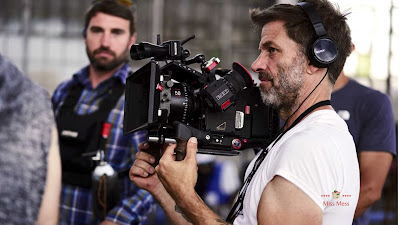How cinema was born at the hands of cinematography?
Cinematography , Cinema, motion pictures 2021
Movies are called "Motion Pictures", and this name is not random, as it summarizes the origin of the art of cinema, which consists mainly of still images that are moved at a specific speed to obtain the illusion of movement, which eventually makes the cinematic.
The film is a mixture of art and science. The idea of cinema has been present in the minds of scientists and artists for a long time, but they waited to get enough science to make a device that does two important things: capture moving images and put them on a medium, and then display images from this medium to create the illusion of animation.
Cinematography can be defined as the art of taking pictures on raw film in the past, and digital files at the present time, and the cinematographer or director of photography - as it is often called - is responsible for this shooting process, by controlling a number of things; Like the camera, choosing the lens, lighting, framing shots, or sizing up each shot, with the help of an entire team, is the photography team.
Cinematography can be defined as the art of taking pictures on raw film in the past, and digital files at the present time, and the cinematographer or director of photography - as it is often called - is responsible for this shooting process, by controlling a number of things; Like the camera, choosing the lens, lighting, framing shots, or sizing up each shot, with the help of an entire team, is the photography team.
But the filming process is part of a whole, as it is completely supervised by the greatest control over the fate of the film, the film director, whose director of photography tries to turn his imagination and vision of the film into a cinematic image.
The history of cinematography began in the 1880s, when attempts to combine images to achieve the illusion of motion began, and the first preserved cinematic images, Roundhay Garden Scene, shot in 1888, were 2.11 seconds long.
But cinematography as we know it today was developed by brothers Louis and Auguste Lumiere, who made the first cinematic camera, and the first cinema projector, in 1895.
The development of cinematography has always been driven by the development of imaging technology itself, and its equipment; Whenever something new appeared , whether in science or industry filmmakers took advantage of these new data to inject new blood and vitality into their work.
Since the eighties in the 19th century, films have been all filmed in one color or with a technique called “Monochrome”, and most of the films were in black and white, as the coloring in that period was through coloring the “frames”, each one individually, manually and with a thin brush , which is very tiring and expensive as well.
There is a lot of confusion among film researchers about the first color films, as it is common among cinema lovers that the first color film is “The Wizard of Oz” produced in 1939, but in fact there are other films attempts to precede it, and the process of coloring colors began since the early twentieth century And what is meant here is automatically colored films during filming and development, and not manually colored.
Then three-dimensional films appeared that give the illusion to viewers that there are 3 dimensions of binary films. These films appeared since 1915, but they were not widely used, due to their high cost, whether in photography or display, and the use and development of this technology contributed to the emergence of television in the United States, where Studios began using this technology to attract viewers, but the real and strong start of 3D films is the eighties of the twentieth century, and it has certainly developed with the development of cinematography, especially with the emergence of digital photography, but until today 3D photography and display are still limited mainly to films Limited every year belonging to cinematic genres such as action, sci-fi and superheroes, and from large studios, because they require huge budgets.
Until the beginnings of the 21st century, films were filmed on raw or celluloid, but gradually and after the emergence of digital photography, the industry began to move to this emerging medium, and although this technology began to be developed in the eighties of the 20th century, the actual use began with the third millennium, and the beginning of 2010 Digital photography has become the norm and staple in filmmaking, while shooting on raw is a very expensive and personal choice for some filmmakers. Paramount Studio is the first major studio to move completely from raw to digital photography and presentation.
Like all creative fields, technology continues to enrich art with new innovations, and possibilities that were not imagined when the art of cinema was a big dream at the end of the 19th century, and at the present time photography has become mainly linked to post-production processes, coloring and effects that give the image appearance, color and details. different visuals, with the aim of enhancing the vision imagined by the film director.



Comments
Post a Comment